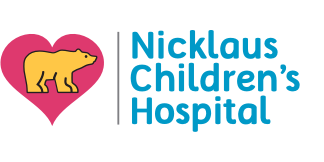- Parents Home
- Para Padres
- Allergy Center
- Asthma Center
- Cancer Center
- Diabetes Center
- Diseases & Conditions
- Doctors & Hospitals
- Emotions & Behavior
- First Aid & Safety
- Flu Center
- Food Allergy Center
- General Health
- Growth & Development
- Heart Health
- Homework Help Center
- Infections
- Newborn Center
- Nutrition & Fitness Center
- Play & Learn Center
- Pregnancy Center
- Q&A
- Recipes
- School & Family Life
- Sports Medicine Center
- Videos
- Kids Home
- Para Niños
- Asthma Center
- Cancer Center
- Diabetes Center
- Feelings
- Getting Help
- Health Problems
- Health Problems of Grown-Ups
- Heart Center
- Homework Center
- How the Body Works
- Illnesses & Injuries
- Kids' Medical Dictionary
- Movies & More
- Nutrition & Fitness Center
- Puberty & Growing Up
- Q&A
- Recipes & Cooking
- Relax & Unwind Center
- Stay Safe Center
- Staying Healthy
- Staying Safe
- Videos
- Teens Home
- Para Adolescentes
- Asthma Center
- Be Your Best Self Center
- Cancer Center
- Diabetes Center
- Diseases & Conditions
- Drugs & Alcohol
- Expert Answers (Q&A)
- Flu Center
- Homework Help Center
- Infections
- Managing Your Medical Care
- Managing Your Weight
- Nutrition & Fitness Center
- Recipes
- Safety & First Aid
- School & Work
- Sports Center
- Stress & Coping Center
- Videos
- Your Body
- Your Mind
A to Z: Osteodystrophy
Osteodystrophy (os-tee-oh-DIS-truh-fee) is a general term for defective or abnormal bone development.
More to Know
Bones are mostly made of a protein called collagen and a substance called calcium phosphate. This is why calcium is important for building and maintaining strong bones. But a number of conditions can affect the way a person's body breaks down and uses minerals like calcium and phosphorus to build bones. This can cause bones to form abnormally or break down too quickly.
Osteodystrophy is usually a complication of kidney disease. In these cases, it is called renal osteodystrophy. Renal osteodystrophy can cause skeletal deformities, slowed growth, bone and muscle pain, knock-knees, and bowlegs. Sometimes liver disease can also cause osteodystrophy in a condition called hepatic osteodystrophy.
Osteodystrophy is commonly associated with conditions like osteoporosis (decreased bone strength), osteitis fibrosa (soft, deformed bones), and osteomalacia (softening and weakening of bones due to a lack of vitamin D, calcium, or phosphate). Osteomalacia in children is called rickets.
Treatment for osteodystrophy involves treating the condition that is affecting bone development and treating any symptoms as they appear.
Keep in Mind
Many of the conditions that cause osteodystrophy respond well to treatment with medications, supplements, and changes in diet.
All A to Z dictionary entries are regularly reviewed by KidsHealth medical experts.

© 1995- The Nemours Foundation. KidsHealth® is a registered trademark of The Nemours Foundation. All rights reserved.
Images sourced by The Nemours Foundation and Getty Images.

